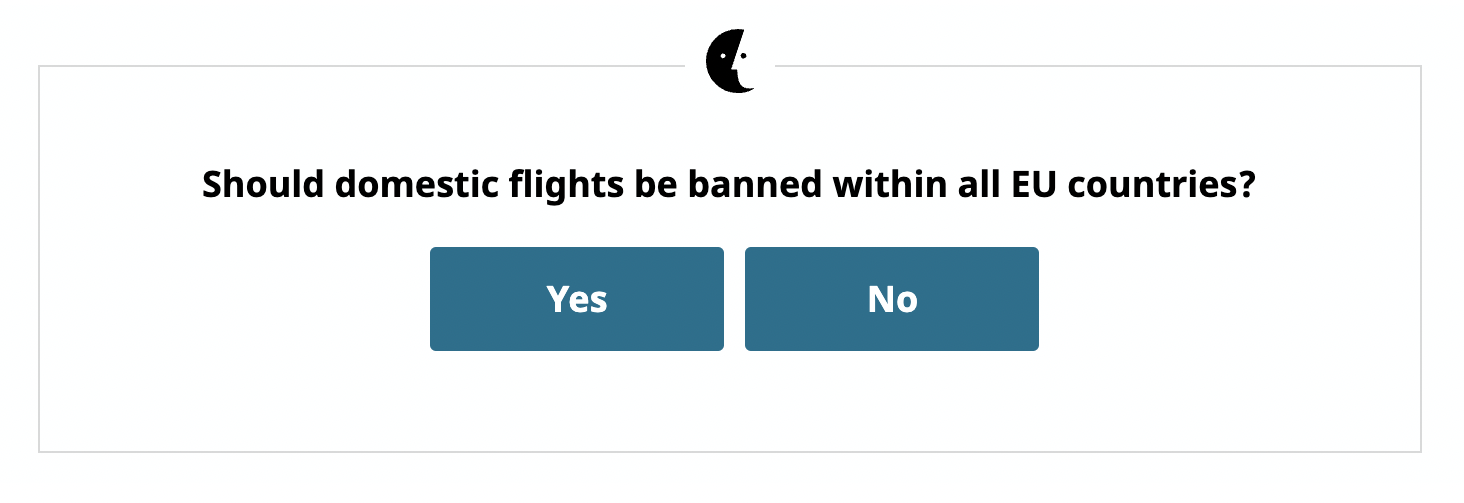Four-day workweek: Dream or reality?
Pilot schemes show that the four-day week can increase productivity while significantly improving personal wellbeing. So what is holding back this long mooted reform? Comparison shows that some models are more popular than others among employers and employees alike.


Imagine a workweek that wraps up after four days, leaving you three days to relax, enjoy quality time with loved ones and follow personal pursuits. Through pilot projects or full legal recognition, the four-day workweek is no longer a pipedream, but the reality of many employees across Europe and around the globe.
Pilot projects have been run in several countries, and the results have been surprisingly positive. Among them is the United Kingdom, where a six-month trial involving 61 companies and 2,900 employees achieved an astonishing 90 percent retention rate.
Employees continued to receive full pay while working 80 percent of their previous hours, on the condition of maintaining 100 percent productivity. The results were telling: productivity was not just maintained, but increased.- Work-life balance improved and employers and employees alike expressed satisfaction.
In a groundbreaking move in 2022, Belgium became the first European country to legally endorse the four-day workweek without loss of pay. The catch? The same number of work hours, just packed into fewer days. So far, less than one per cent of Belgian employees have adopted the four-day workweek.

Image: Evan Blaser / Source: Wikimedia Commons
So, although Europe is starting to flip the script on the standard nine-to-five and five-out-of-seven, it seems not everyone is jumping on the bandwagon. What factors have hindered the Belgian model’s popularity, compared to the UK’s? And in a landscape where certain sectors (such as the gig economy) operate under different rules, are we collectively prepared to bid farewell to traditional working hours and clock out earlier?
Not the first time the workweek changes
Current pilots and experiments in overhauling the workweek have historical precedents. In 1926, the industrialist Henry Ford trialed a 40-hour, five-day workweek in the United States in his automotive plants. This marked a departure from the prevalent six-day workweek, with Ford opting to close his plants on Saturdays and Sundays.
Despite initial opposition from employers and the media, Ford’s experiment proved successful: his factories maintained productivity levels, and the additional free time for workers resulted in increased spending within their communities. By the 1930s, the five-day workweek had become the standard, eventually being enshrined in US law in 1940.
The work landscape has evolved significantly since then. In the 1970s, a shift from farming and manufacturing to the technology sector transformed the job market. The rise of the service sector and knowledge-based economy introduced white-collar cubicle jobs that relied on mental skills, problem-solving and communication, rather than physical labour. Although these new types of jobs were more intellectually strenuous, the government took no measures to reduce the workweek.
On the corporate front in the US, however, there was a growing trend in the early 1970s to embrace the compressed four-day, 40-hour workweek, with sixty to seventy companies adopting it per month. By 1978, hundreds of businesses and around one million Americans had shifted to a four-day schedule. But contrary to early expectations of it becoming the norm, interest declined in the 1980s.
Workers were hesitant about working longer hours and factors like the rise of part-time employment and changing economic policies (keyword Reaganomics) encouraging longer work hours and productivity gains contributed to the shift away from the four-day workweek.
Since the 1980s, technological advancements have persistently reshaped the work environment, by automating processes, replacing workers with machines in various production sectors, and fostering a continuous surge in productivity. The emergence of new communication channels and digitalisation enabled novel work formats, such as teleworking and hybrid working.
But despite this wide array of changes, work days and hours have stayed the same since 1926. Officially, that is. Unofficially, an increased demand for performance has pushed many employees into working extended hours. This together with the erosion of work-life boundaries is leading to increasing levels of burnout, recognised by the World Health Organization (WHO) in 2019 as a work-place syndrome resulting from chronic stress.
The pandemic push: a UK success story
The four-day workweek regained momentum due to the COVID-19 pandemic, which not only established remote work as the standard but also underscored the importance of wellbeing and mental health.
Leading the charge has been 4 Day Week Global, a nonprofit organisation dedicated to reshaping the future of work. Its six-month pilot projects across the globe empower companies to test-drive this model. In the UK, the nonprofit facilitated a trial for businesses across diverse sectors, including finance, marketing and retail, spanning from June to December 2022. The pilot project involved reducing working hours to 32 per week.
Among the participating employers was Bookishly, a Northamptonshire literary gift company led by Louise Verity. Reflecting on the pandemic’s impact, Verity said that ‘The pandemic changed everything about the way we did things and also the way that I felt about the staff. We felt like a closer team.’
‘The pandemic made me realize that providing fulfilling jobs was part of Bookishly’s mission,’ she added. Together with her team of eight, Verity identified and tackled key concerns surrounding a potential four-day workweek at Bookishly. Questions like ‘How do we manage interactions with customers and trade partners?’ and ‘Can we decide on a day when we don’t post and people can’t get a hold of us?’ were collectively addressed.
The team agreed to designate Wednesday as a day off for everyone. Breaking the week up like that makes it now feel like small, two-day weeks. It helps with attention span and has not affected output,’ says Verity. ‘This “mini-week” structure also created a work routine, with dedicated tasks allocated across Mondays and Thursdays, and Tuesdays and Fridays.
Not all companies approached the four-day workweek in the same way. Aliyah Davies, representing the 4 Day Week Campaign, another actor involved in coordinating the UK trial, highlighted the varied setups. Some businesses chose Fridays or Mondays off, while others staggered the days to ensure coverage for all five workdays. Some companies implemented it only for select departments, where the transition could be smoother,’ Davies noted. The campaign avoided advocating for a one-size-fits-all approach, as long as the proposals ensured 100 percent pay and reduced hours.
After extending the trial for an additional six months beyond its original duration to observe seasonal changes, especially during Christmas, Bookishly joined 17 other companies from the initial trial in permanently adopting the four-day workweek. This decision is now included in Bookishly’s employment contracts, meaning all new hires follow a four-day work schedule.
While not all companies from the pilot project have opted for the same contractual adjustments as Bookishly, they nearly unanimously retained the four-day workweek. Davies says this decision stemmed from the fact that ‘they found that it made their employees happier and gave them a better work-life balance, while benefiting the business, with productivity often massively increased’.
The impacts on employee welfare are remarkable, but questions arise about how companies measure productivity-related success. In a society already burdened by over-productivity and overwork, should firms continue to prioritise increased output as a key achievement metric for the four-day workweek? Together with wellbeing indicators, could embracing sustainable productivity levels for both humans and the environment be a more constructive approach? These issues are yet to be addressed.
For now, the potential effects of legally implementing the four-day workweek across the UK remains uncertain. Apart from anything else, the government has shown no support for such a move. On the contrary, in October 2023, it issued a guidance statement instructing local authorities to cease any four-day workweek trials immediately, citing concerns that a 20 percent reduction in local authority capacity does not provide value for money. This stance may partly be influenced by a three-month pilot project launched by the South Cambridgeshire District Council in January 2023, which despite legal threats and funding cuts from UK lawmakers was prolonged until April 2024.
The Belgian model: employers not fully on board
In Belgium, the results of the government’s top-down approach to legalising the four-day workweek in November 2022 have been underwhelming, with adoption rates remaining extremely low. Unlike the UK’s model with reduced hours, Belgium requires employees to cram the same 38-hour workload into four 9.5-hour days.
Trade unions sounded the alarm early on. The President of the General Labour Federation of Belgium denounced the measure as a ‘murderous stab in the demand for the collective reduction of work’.
Employers were also wary. A survey published in November 2022 by Securex, a leading Belgian social service provider, revealed that around 25 percent of 1,340 sampled employers were sceptical about the feasibility of a four-day workweek in their respective sectors. This sentiment was prevalent among employers in manufacturing, hospitality and retail. Only 13 percent were open to approving shorter workweek requests.
Kristen du Bois, a doctoral researcher at the University of Ghent focusing on the four-day workweek and employee wellbeing, has explored the reasons for employers’ scepticism, conducting interviews with 17 company leaders. A key reason is the legal provisions, she discovered. Employees are obliged to follow a fixed schedule, obliging them to give up flexible work hours that allow them to determine when their workday begins and ends – a valued perk of their work arrangements.
Administrative hurdles added fuel to the fire, du Bois explained: ‘While a full-time workweek in Belgium is 38 hours, many individuals work 40 hours. If they request a four-day workweek, the employers must negotiate a collective bargaining agreement allowing the employee to work 10 hours a day. This is perceived as a burden.’
If the legal and social barriers are too high, du Bois pointed out, employers are more likely to ‘informally agree with their employees to four instead of five days without registering it’. This might mean that in Belgium, the number of people working a four day workweek could in fact be higher than reported.
A case in point involves a young woman in the nonprofit sector who chose to remain anonymous. She reached an informal agreement with her employer for a four-day workweek. Her timesheet, however, indicates she works five days. She is nevertheless satisfied with the arrangement. Interacting with people from different time zones often entails both early morning and late-night meetings.
‘Working longer hours for fewer days helps me hold onto my time more easily,’ she explained, even though a heavy workload sometimes compels her to work on her day off.
Not everyone feels the same way. Agnieszka Piasna from the European Trade Union Institute (ETUI) explains that, for most, the nine-hour work schedule ‘would be really difficult’, especially considering that commuting time would stretch the workday to ten or eleven hours.
‘It essentially eliminates any opportunity for private or family life during the workdays: you cannot take your kids to school or pick them up, and having dinner together becomes impractical. It erodes the entire free time within a given day, and that spans four days in a week.’ Piasna stressed that the Belgian model should not even be referred to as a ‘four-day workweek’, but as a ‘compressed workweek’.
A gendered issue
Through the right to opt-in on an individual basis, the Belgian government shifted responsibility for securing the four-day workweek to employees, who must negotiate with their employers and establish a formal process.
Piasna warned that this approach ‘is more likely to have adverse effects on women compared to a collectively agreed upon and applied system’. Collective solutions eliminate discrimination among employee groups, ensuring everyone’s equal access.
‘Women are more inclined to seek reduced working hours, similar to flexible options,’ explains Piasna, ‘as they still bear the primary responsibility for caregiving, including children and the elderly, as well as household chores. This is not always viewed favourably by employers, who may perceive it as a diminished commitment to work.’
This, in turn, can impact on career progression, including promotions. It can also affect employability, since there might be a presumption that women will be more inclined to request a shorter workweek. Consequently, women often refrain from requesting reduced working hours.
Piasna also challenged the argument that certain women-dominated sectors facing labour shortages, such as hospitality and healthcare, cannot accommodate a four-day model. She argues that this view indirectly restricts women’s access to reduced hours, despite evidence from studies suggesting that a shorter workweek would improve working conditions and attract more workers, potentially alleviating shortages.
‘Long hours, demanding tasks, and the need for significant skills and effort often drive people away,’ according to Piasna. Reducing the workweek, she argues, could address these challenges, making these sectors more appealing and retaining talent.
The gig economy: a more complicated outlook
While the four-day workweek sparks conversation in many sectors, some workers find themselves left out of the equation – those entangled in the gig economy. This is due to the fundamental difference in their employment structure.
Unlike traditional jobs, gig workers lack regular schedules and often rely on non-traditional payment structures based on minutes or seconds worked. This model fails to account for crucial unpaid time investments, such as waiting for tasks, dealing with clients, or being ‘locked in’ if freelancing. ‘Until these fundamental issues are addressed,’ ETUI’s Piasna emphasized, ‘discussing a shortened workweek for gig workers remains premature.’
Some hope remains, however. The EU’s proposed Platform Work Directive, projected to be enacted by 2025, could become a game changer. The legislation introduces the ‘presumption of employment’, requiring platforms to prove workers are genuinely self-employed, not employees. If classified as employees, gig workers could gain access to minimum wages, social security and the right to collective bargaining. These changes could pave the way for more structured work hours and, potentially, shorter workweeks.
More EU experiments
The adoption rate of the Belgian four-day workweek could see improvement with certain key changes. Du Bois revealed that the government has launched a pilot study on a four-day workweek with working-time reduction. Results are yet to be disclosed.
The momentum for the four-day workweek is gaining traction in Europe. On 1 February 2024, Germany initiated a six-month trial involving 45 companies, spearheaded by 4 Day Week Global. Portugal has also been undertaking a similar project since 2023, involving 39 companies.
At the EU level, the European Commissioner for Jobs and Social Rights Nicolas Schmit says that ‘there is no need for new legislation on this at the moment: a four-day working week is already possible to implement under the current EU legislation’. He added also that the European Parliament is currently carrying out a pilot study on the feasibility and impact of the four-day workweek, by looking at worker and company level.
The Belgian and UK cases highlight the potential benefits and challenges of the four-day workweek, contributing to the vision of a reimagined work model benefiting employees, employers and society.
With a projected 40 percent increase in productivity in developed countries by 2035, driven by artificial intelligence, there is a pressing need to reassess gain distribution. Will we continue to invest in welfare and allow company owners and shareholders to pocket the profits, or prioritise leisure opportunities for an increasingly exhausted, overworked workforce?













